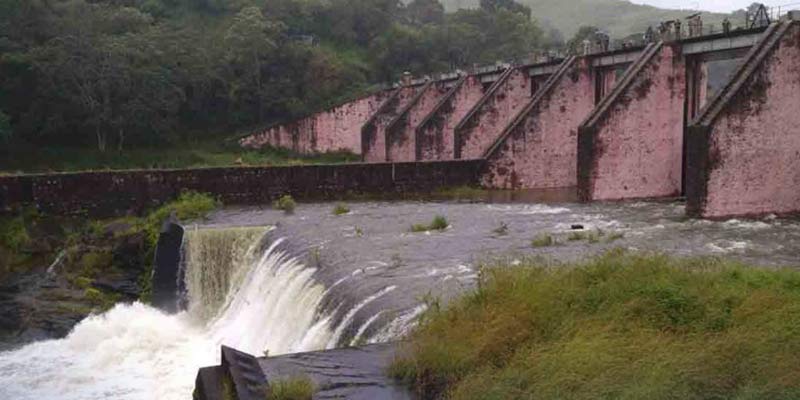- India
- Jun 14
- Kevin Savio Antony
Kerala demands safety review of Mullaperiyar dam
The Kerala government has demanded a safety review of the 128-year-old Mullaperiyar dam before a Supreme Court-appointed supervisory committee gives permission to repair it.
Mullaperiyar dam, built in 1895 on Periyar river in Idukki district of Kerala, is operated by the Tamil Nadu government for its irrigation and power generation needs.
Kerala is insisting on building a new dam, citing safety concerns, but Tamil Nadu is against it, saying the present structure was strong.
History of Mullaperiyar dam case
• Mullaperiyar dam was constructed pursuant to the Periyar Lake Lease Agreement of October 29, 1886 across the Periyar river.
• The construction continued for about eight years and was completed in 1895.
• A lease indenture for 999 years was made on October 29, 1886 between Maharaja of Travancore and secretary of state for India for Periyar irrigation works.
• By another agreement in 1970, Tamil Nadu was permitted to generate power also.
• Its full reservoir level is 152 ft and it provides water through a tunnel to Vaigai basin in Tamil Nadu for irrigation benefits.
• The dam is located in a seismically active area.
• In 1979, reports appeared in the media about damage to the dam. In November 1979, some emergency medium term measures and long-term measures for strengthening of Mullaperiyar Dam were decided.
• Later, the matter became sub-judice with several petitions.
• Leaks and leaching are also concerning, as the methods and materials used during construction are considered outdated compared to current building standards.
• In 2000, on the directions of the Supreme Court, an expert committee with representatives from both states was constituted to study the safety of the dam. The Committee in its report opined that with the strengthening measures implemented, the water level can be raised from 136 ft To 142 ft without endangering safety of the dam.
• In 2006, the Supreme Court permitted the government of Tamil Nadu to raise the water level of Mullaperiyar dam from 136 ft To 142 ft and to carry out the remaining strengthening measures.
• After that, the government of Kerala passed the Kerala Irrigation and Water Conservation (Amendment) Act, 2006 which prohibited the raising of water level beyond 136 ft in the Mullaperiyar Dam and placed it in the Schedule of ‘Endangered Dams’.
• A Constitution Bench, consisting of 5 judges of the Supreme Court, heard the case in 2013.
• In its May 7, 2014 verdict, the Supreme Court held that the Mullaperiyar Dam is safe and allowed the Tamil Nadu government to raise the water level to 142 feet.
Dam Safety Act
• The Dam Safety Act addresses longstanding concerns about the safety of major dams across India.
• Effective from December 2021, it aims to prevent dam failure disasters through measures such as surveillance, inspection, operation, and maintenance.
• The Act establishes institutional mechanisms to ensure the safe functioning of dams.
Key provisions of the Act:
• The Act applies to dams over 15 meters in height and those between 10 and 15 meters with specific stipulations.
It creates two national institutions:
i) The National Committee on Dam Safety (NCDS), responsible for developing dam safety policies and recommending regulations.
ii) The National Dam Safety Authority (NDSA), tasked with implementing policies and resolving inter-state issues. The NDSA serves as the regulatory body.
• The legislation also mandates the formation of State Dam Safety Organisations and State Committees on Dam Safety.
• Dam owners are held accountable for the construction, operation, maintenance, and supervision of dams.
Dam Safety Act and Mullaperiyar Dam:
• According to the Act, the NDSA acts as the State Dam Safety Organisation for dams located in one state but utilized by another, such as the Mullaperiyar dam.
• Experts suggest that the central government may propose in court that the NDSA can take over the supervisory committee’s functions concerning the Mullaperiyar dam.
Manorama Yearbook app is now available on Google Play Store and iOS App Store

